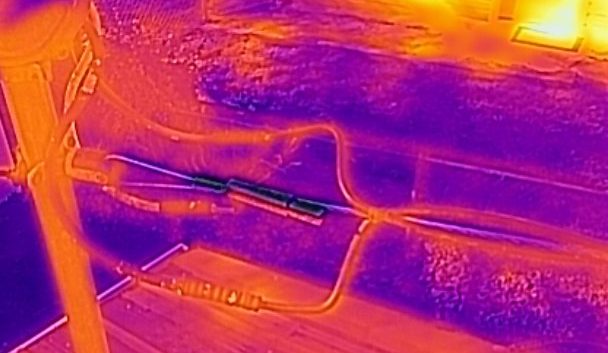At Bent Nail Home Inspection Services, we are always looking to improve our process so we can provide the best Home Inspection in the Knoxville, Oak Ridge, Clinton, and all-over East Tennessee areas. Recently, we attended Monroe Infrared Technology Inc, Certified Residential Thermography course. I am excited to say the whole team passed the course and received our certification. What did we learn? How will that information improve our Home Inspection process?
First off, let’s talk a little about the science behind thermal imaging. The science of thermal imaging will help you understand how it will help us help you. Thermal imaging measures changes in temperature across an object. To measure these temperature differences, the camera sees and uses light waves that range from 8-12 megahertz (MHz). This wavelength is not visible to the human eye. For thermal imaging to be able to see temperature differences, the surface of what we are measuring must not have a reflective surface. There is a bunch of science stuff around this, but let’s just keep this simple and say the thermal camera will not work on the shiny chrome bumper of your car or a polished chrome faucet. Flat, eggshell, and semi-gloss wall paints work just fine. In general, most building materials fall into the non-reflective type of material that thermal imaging works great with.
Here are some other myths about thermal imaging that are not true:
· One thing you see in the movies is thermal imaging seeing through walls. While you see this happen in science fiction movies, it doesn’t work that way in real life.
· With thermal imaging, you can see water. Nope! The smooth surface of water or glass is too smooth or reflective for thermal imaging to get accurate temperature differential on.
Since thermal imaging cannot do these things, how does it makes Bent Nail’s Home Inspection process better? Without getting into too much science, here is how the thermal imaging camera will help us have a better Home Inspection. As we said earlier, thermal imaging shows us temperature differences or thermal anomalies that will point to possible issues. Here are some quick examples:
One of the areas where thermal imaging will help us is in the area of water leaks. As we spoke before, the thermal camera cannot see water. But as water evaporates, it cools. There is a bunch of chemistry and physics behind this process, but we will just say it is the evaporative cooling effect. So as the water evaporates, it will show as a cold thermal anomaly in the wall or ceiling. We can then check the area with our moisture meters to verify if the area is wet or not. It is possible a cool spot in the ceiling is caused by cold air leaking from a duct and blowing on the ceiling. We don’t know what the problem is, we just know that it is an unexpected temperature difference – a thermal anomaly. It will need further evaluation to determine what is causing these issues.
Another area where thermal imaging will help us is when we are looking at the home’s electrical system. When you energize an electrical circuit by turning a light on, the circuit will warm up. This is an expected result of energizing electrical wiring, and the heat will be consistent across the circuit. Since the thermal camera senses temperature and temperature changes, we can scan the service drop, visible wiring, outlets, and other items looking for thermal anomalies and point them out so that a licensed electrician can evaluate and correct these as needed.
Thermal imaging can also help us improve our Home Inspections when we look at the wall of a house. When we use thermal imaging on the walls, we can tell how well the insulation in the house is performing. We can also see where moisture is evaporating because evaporating water creates a cool area. Remember earlier I told you thermal imaging can’t see water. Well, this is true, but thermal imaging can see the effects of water on a surface.
The last area thermal imaging will help us with is electrical panels. When wires are not tightened correctly or if a breaker is failing, it will create a hot spot which will show in the thermal images. All of these things will show as thermal anomalies that will require further evaluation to determine exactly what is happening.
Is thermal imaging a magic bullet that will make every Home Inspection perfect? No. Thermal imaging is another tool in our proverbial belt we will use to help us identify an issue that needs further attention. Does thermal imaging show issues that we might not see otherwise? Yes! We feel that thermal imaging is an important tool and will help us provide our customer a better product. This is why we include thermal imaging in every Home Inspection and why we took the time and effort to gain our Certified Residential Thermography Certification.
As always, if you have a question, whether you use Bent Nail Home Inspections Services or not, you are always welcome to call us. We will be happy to help you in any way we can.
Have a great day,
Lee and Kadee

